A simple linen veil, based on paintings by Breughel the Elder, worn by both women and girls.
The prompt for this project was that my friend Felicia wanted some appropriate headwear to go with her new outfit – lower/middle class, 16th century Flemish. The headwear needed to cover her short hair and be easy to put on and wear, not a complex veil which needed folding and pinning.
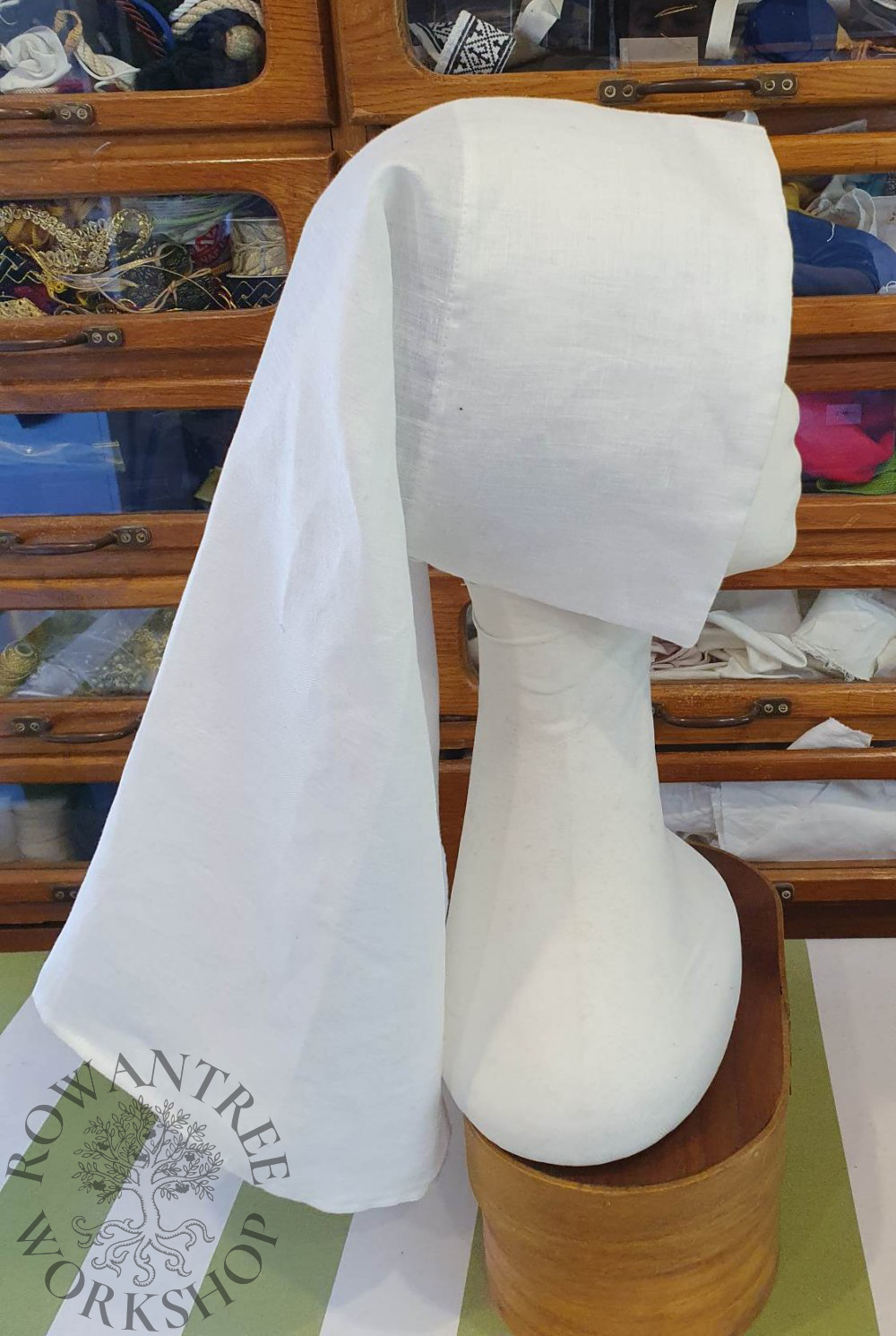
Research and Design
Joachim Beuckelaer and Pieter Aertsen painted many wonderful images of 16th century working class women from the Netherlands. However, the foundation of the various types of headwear in these images is a pair of the braids, taped up on to the back of the head. The archetypical small coif will not work with short hair!
So I looked to other artists and found some useful images in Breughel for two simple headwear styles – a veil and a coif. The veil has a rectangular fall at the back, which can also be worn pinned up. The two corners at the base are quite distinctive and show this is not just a tube.
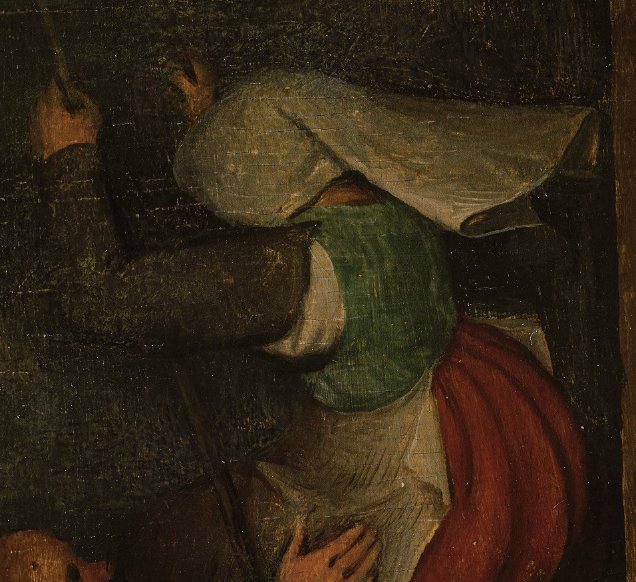
Source: Inside Bruegel
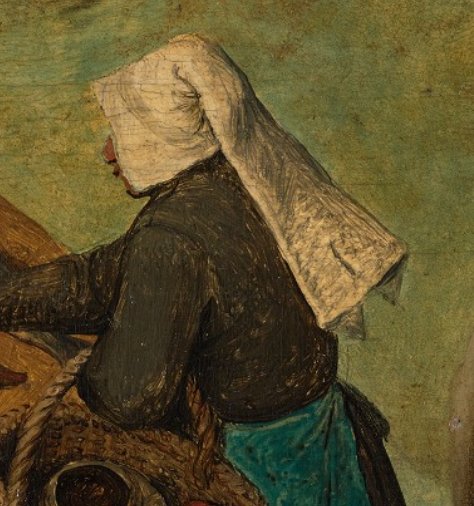
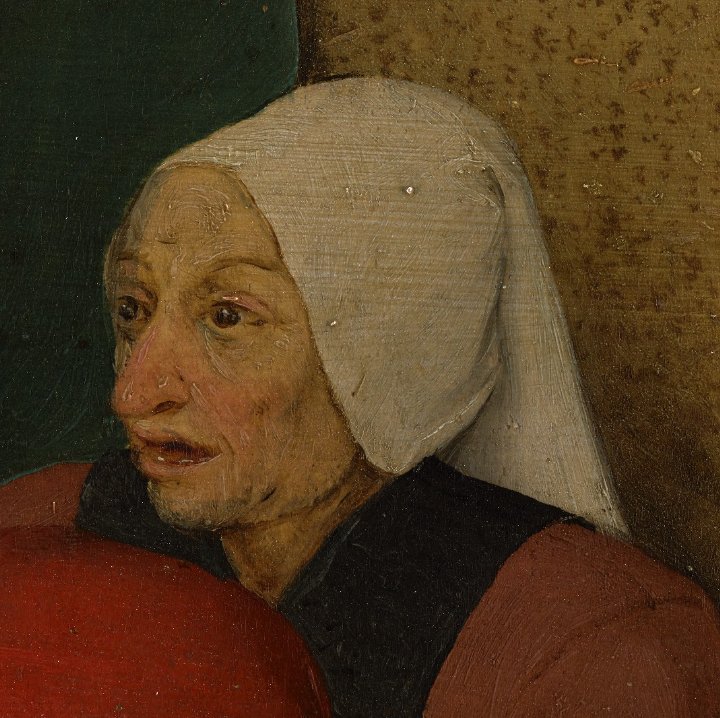
Source: Inside Bruegel
Construction
First, the pattern. As always, the first step is to pad up the headform to the right size.
I took measurements on the headform to estimate the front edge length and length of the fall at the back, then tried it out in scrap fabric, trimming and pinning until it looked right. A simple rectangle 50cm wide x 56cm long with seams and ties gave the right result, but the front needed more stiffening.
Although this could be achieved with starch, this needed to be lower class, ‘no fuss’ headwear – it needed heavier fabric, or an extra layer at the front. Since I didn’t have heavier linen on hand, I opted for sewing on extra layer – 50cm x 14cm deep.
Once I was happy with the result, I cut the shape from shirt-weight linen, then sewed a deep hem at the front, and narrow hems on the sides and bade. I sewed a pair of twill tape ties at the base of the deep hem, and sewed the two side seams together for about the middle third of the length.
The finished veil gives the right effect, with the points hanging below, as seen in the Breughel paintings.
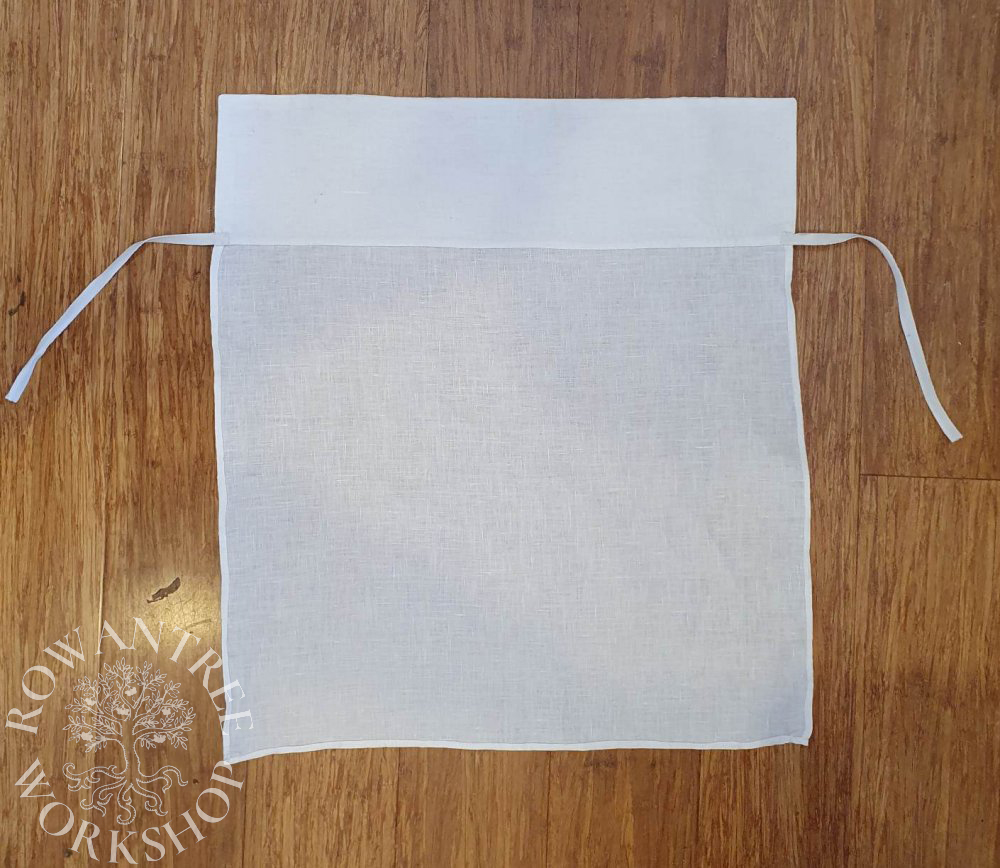
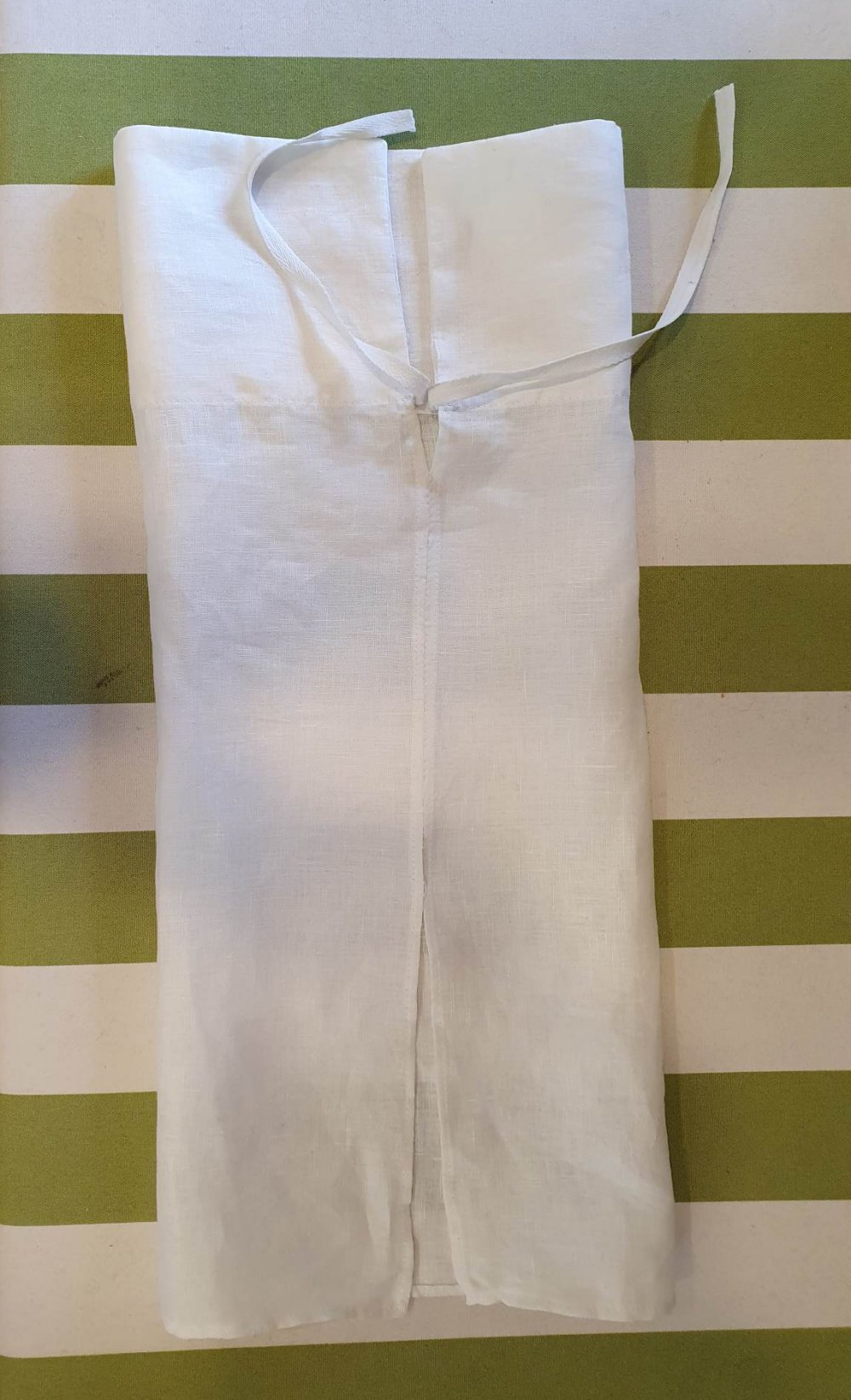

The veil worked well for Felicia – easy to wear and looked good.
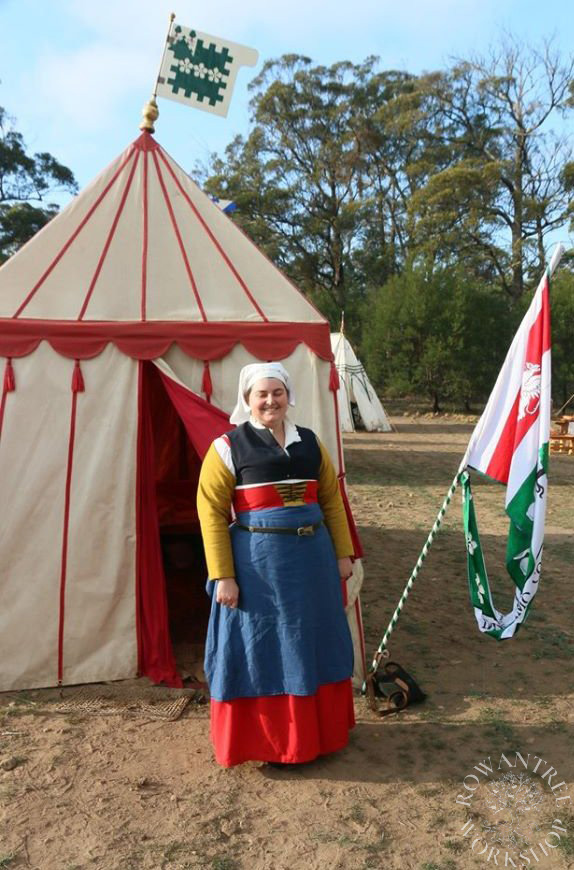

Afterthoughts
I also made Felicia a shorter Flemish coif, more suitable for kitchen work.

